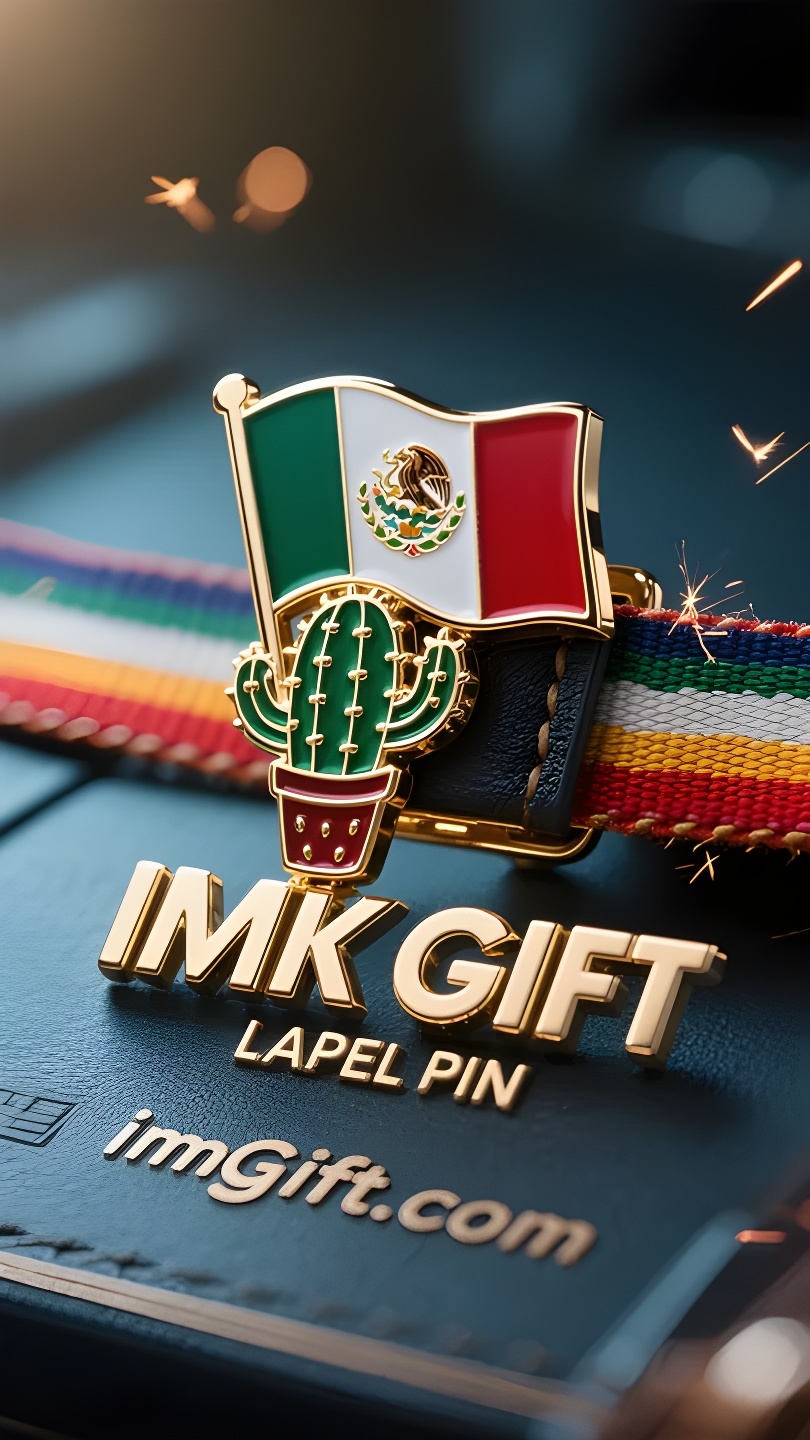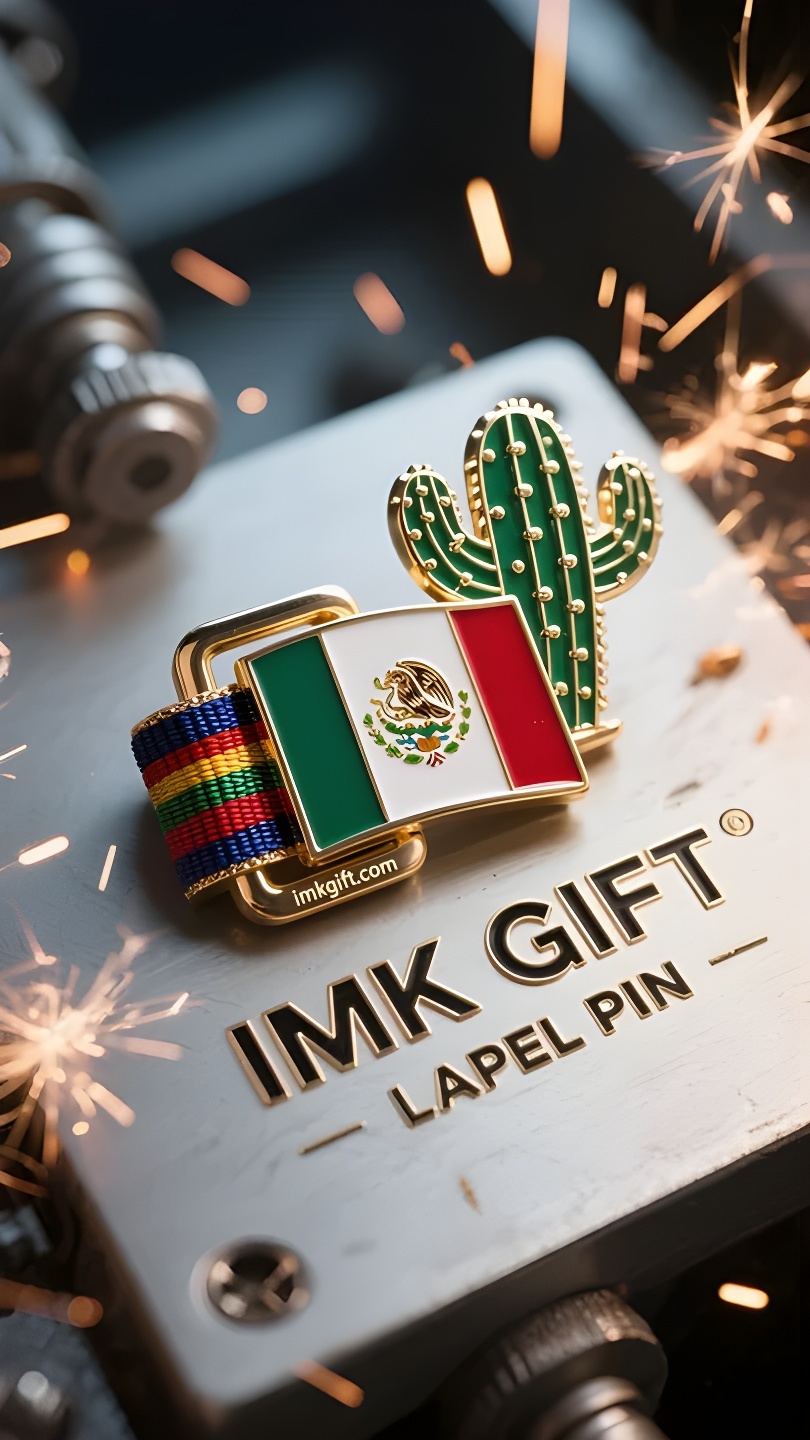in996-Medalla-de-Cactus-Flor-de-la-Fe-que-Florece-en-el-Desierto
▼
Durante las celebraciones del Día de la Independencia de México (16 de septiembre), la gente siempre toca las hebillas de cactus que llevan en el pecho: son el tótem espiritual grabado en la sangre nacional. El patrón de un águila sosteniendo una serpiente y parada sobre un cactus en la bandera nacional cuenta la leyenda de los aztecas cruzando el desierto para construir la ciudad de Tenochtitlan. La brillante hebilla de plata que rodea la cintura de cada mexicano es una medalla moderna que convierte esta herencia milenaria en una guía para la acción. El borde en forma de engranaje de la hebilla del cinturón de cactus alude a la trayectoria de la vida que estalla en la adversidad. Así como un cactus puede almacenar agua y echar raíces en la arena árida, la textura pesada de este accesorio de metal simboliza la columna vertebral erguida del pueblo mexicano frente a la opresión colonial, la sequía y la hambruna. No es solo una decoración, sino también una filosofía de supervivencia transmitida de generación en generación: utilizar una cáscara espinosa para proteger el núcleo blando y acumular fuerza para salir del suelo en silencio. Mientras los fuegos artificiales de celebración iluminan la bandera, la gente siempre pasa sus pulgares sobre el relieve de cactus en el centro de la hebilla del cinturón. Éste es el ritual que realizan los mexicanos cuando enfrentan desafíos: así como el cactus transforma el sol abrasador en energía para el crecimiento, creen que la verdadera gloria es atravesar los grilletes del destino con el filo afinado por la adversidad. Cada hebilla de cinturón empapada de sudor nos dice que la vida más tenaz nace a menudo de la tierra más pobre.
During the celebration of Mexico’s Independence Day (September 16), people always touch the cactus belt buckle on their chests – it is a spiritual totem engraved in the blood of the nation. The pattern of an eagle holding a snake and standing on a cactus on the national flag tells the legend of the Aztecs crossing the desert to build the city of Tenochtitlan, and the silver belt buckle shining on the waist of every Mexican is a modern medal that turns this thousand-year heritage into a guide to action. The gear-shaped edge of the cactus belt buckle coincides with the trajectory of life bursting out in adversity. Just as the cactus can store water and take root in barren sand, the heavy texture of this metal accessory symbolizes the Mexicans’ straight spine in colonial oppression, drought and famine. It is not only a decoration, but also a survival philosophy passed down from generation to generation: using a thorny shell to protect the soft core and accumulating the power to break out of the ground in a silent posture. When the fireworks of the celebration illuminate the national flag, people always use their thumbs to stroke the raised cactus relief in the center of the belt buckle. This is the ritual that Mexicans follow when facing challenges. Just like a cactus transforms the scorching sun into growth energy, they believe that true glory is to pierce through the shackles of fate with the edge sharpened by adversity. Every belt buckle soaked in sweat is telling us that the most tenacious life is often born in the poorest soil.
在墨西哥独立日(9月16日)的庆典中,人们总会触摸胸前的仙人掌皮带扣——那是刻进民族血脉的精神图腾。国旗上雄鹰衔蛇立于仙人掌的图案,讲述着阿兹特克人穿越荒漠建立特诺奇蒂特兰城的传奇,而每个墨西哥人腰间闪烁的银质皮带扣,正是将这千年传承化为行动指南的现代勋章。
仙人掌皮带扣的齿轮状边缘,暗合着生命在逆境中迸发的轨迹。正如仙人掌能在贫瘠沙砾中贮水扎根,这种金属配饰的厚重质感,象征着墨西哥人在殖民压迫、干旱饥荒中始终挺直的脊梁。它不仅是装饰品,更是代代相传的生存哲学:用带刺的外壳保护柔软内核,以沉默的姿态积蓄破土而出的力量。
当庆典的烟花照亮国旗时,人们总会用拇指摩挲皮带扣中央凸起的仙人掌浮雕。这是墨西哥人面对挑战时的仪式——就像仙人掌将烈日炙烤转化为生长能量,他们相信真正的荣耀,是用困境磨砺出的锋芒刺穿命运的桎梏。每个被汗水浸润的皮带扣,都在诉说:最顽强的生命,往往诞生于最贫瘠的土壤。
▼
Contact Us
📞 Tel: +0086-760-85286839
📧 Email: sales3@imkgift.com








